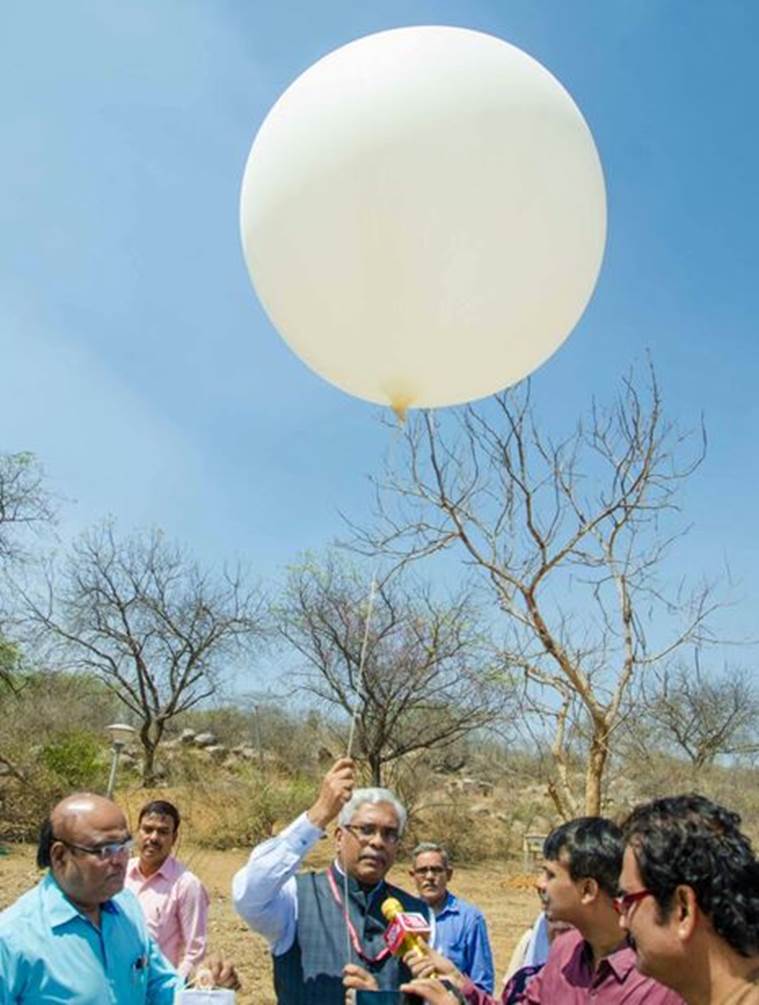The India Meteorological Department (IMD) on Friday inducted an indigenously developed GPS-enabled sonde — a pilot balloon — which will provide accurate information about wind speed and wind directions from greater atmospheric heights within an hour. Sonde is a meteorological balloon, on which GPS sensors and related instruments are mounted, and it is then released. This exercise is carried out by meteorologists at all observatories twice every day — at 11.30am and at 1.30 am.
On the occasion of World Meteorology Day, M Rajeevan, secretary in the Ministry of Earth Sciences, inaugurated this facility from the IMD’s New Delhi observatory on Friday.
“Earlier, the readings would be calculated manually and obtained only after a span of over two hours — from the time a balloon was released — for taking observations. With GPS, it will now be possible to get the real-time position of the balloon and the readings can be obtained within an hour,” Rajeevan told The Indian Express.
Hon’ble Secretary, MoES at the inauguration of indigenously developed GPS based Sonde for upper air wind measurements ,an achievement towards the #MakeInIndia initiative. pic.twitter.com/dzkxJZAA4T
— MoES GoI (@moesgoi) March 23, 2018
“As it is indigenous, the cost of putting together the instrument was reduced by 40 per cent. It will now be possible to get observations from even higher atmospheric levels,” he said.
With the GPS-enabled sonde, the manual follow-up of the trajectory of the balloon will no longer be needed.
IMD operates 39 radiosonde observatories and 62 pilot balloon observatories across India. The instrumentation facilities comprise the upper air observatories network. They are used to measure the vertical profile of the atmosphere, such as temperature, humidity, pressure, wind speed and wind direction.
The IMD has decided to induct the indigenous sonde into day-to-day operations.
Till now, the existing instruments could not rise beyond 3.5 km from the land surface, as they could not surpass the cloud level. This posed a major hindrance to meteorologists during monsoon months, when cloudy skies would limit the scope of obtaining upper air observations. The newly-operationalised pilot balloon is capable of rising beyond that.
As it is a GPS-based instrument, its sensors will connect with the corresponding GPS satellite and the information will be relayed sooner. It will also be possible to get observations from inside the cloud, improving the accuracy of the readings.
On plans of installing pilot balloons at the rest of the observatories, Rajeevan said, “We are in the process of manufacturing them at our in-house upper-air instruments workshop. Initially, they will be deployed at places that require them for gauging wind speed. We are hopeful of covering the remaining 61 observatories by next year.”
 M Rajeevan, secretary in the Ministry of Earth Sciences, inaugurates the facility at the IMD’s New Delhi observatory on Friday. (Source: Twitter/@moesgoi)
M Rajeevan, secretary in the Ministry of Earth Sciences, inaugurates the facility at the IMD’s New Delhi observatory on Friday. (Source: Twitter/@moesgoi)